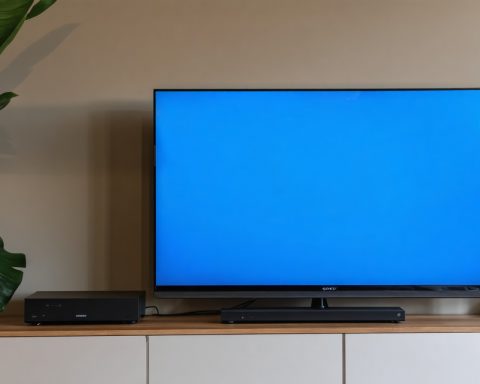In recent years, Iran has made significant strides in enhancing its drone capabilities, and the unveiling of the Shahed 238 jet-powered drone is a testament to these advancements. While the development of the Shahed 238 may not be the latest news, its unveiling continues to capture interest due to its advanced capabilities and strategic implications.
The Shahed 238 is described as a high-altitude, high-speed drone powered by jet engines, marking a substantial shift from Iran’s previous reliance on propeller-driven unmanned aerial vehicles (UAVs). This shift to jet propulsion allows the Shahed 238 to achieve greater speed and altitude, potentially evading interception by traditional defense systems. Such capabilities make the Shahed 238 a significant addition to Iran’s expanding drone fleet.
One of the standout features of the Shahed 238 is its ability to operate in a variety of roles, enhancing the Iranian military’s operational flexibility. The drone is designed for reconnaissance, surveillance, and combat missions, equipped with advanced avionics and payload systems. The versatility of the Shahed 238 enables it to perform long-duration sorties, offering strategic advantages in both defensive and offensive operations.
Advanced avionics and design optimization are key aspects of the Shahed 238, allowing it to undertake complex missions with high efficiency. Iran’s ongoing efforts to enhance drone autonomy are reflected in this model’s potential for extended flight times and the ability to navigate complex environments with minimal human intervention. Additionally, the integration of state-of-the-art sensors enhances the Shahed 238’s surveillance and reconnaissance capabilities, allowing it to gather critical intelligence in real-time.
The strategic implications of the Shahed 238 extend beyond its technical capabilities. Its addition to Iran’s arsenal emphasizes the country’s focus on increasing its domestic defense production and self-sufficiency in military technologies. By advancing its drone program, Iran is not only bolstering its defensive capabilities but also positioning itself as a significant player in the global UAV market.
Despite its advanced features, the Shahed 238’s development does not occur in isolation. It builds on years of incremental advancements in Iran’s drone technology, which has seen the country become a leader in UAV innovation within the region. By showcasing this sophisticated drone, Iran aims to demonstrate its capability to design and manufacture technologically advanced military assets independently.
The showcase of the Shahed 238 has spurred discussions about the regional security dynamics and the evolving nature of drone warfare. As nations around the world enhance their unmanned systems, Iran’s drone capabilities highlight the growing importance of UAVs in modern military strategies.
In conclusion, the Shahed 238’s introduction not only brings advanced technical features to Iran’s military but also underscores the broader geopolitical shifts occurring within the Middle East. As global interest in drone technology continues to rise, understanding developments like the Shahed 238 becomes crucial for comprehending the future landscape of military engagements. The ongoing evolution of Iran’s UAV program serves as a reminder of the rapid pace at which technological advancements continue to reshape global defense strategies.
Unveiling the Shahed 238: Tips and Insights on Iran’s Advanced Drone Technology
The Shahed 238 drone reflects significant progress in Iran’s aerial capabilities, marking a pivotal moment in the country’s UAV development. To understand the broader implications and technical advancements of the Shahed 238, here are some insights and interesting aspects related to this transformative technology.
1. Key Features of Jet-Powered Drones
The leap from propeller-driven to jet-powered UAVs like the Shahed 238 represents a major technological advance. Jet engines provide the Shahed 238 with superior speed and altitude capabilities, enabling evasive maneuvers against traditional defense systems. This enhances both the tactical versatility and the strategic reach of the drone in various missions.
2. Operational Versatility
The Shahed 238 isn’t confined to a single role. It can seamlessly switch between reconnaissance, surveillance, and combat tasks. This flexibility is due to its advanced avionics and payload systems, which allow it to conduct lengthy missions and gather crucial intelligence. Understanding the operational applications of drones like the Shahed 238 reveals the future of military operations that prioritize multi-role adaptability.
3. Autonomy and Intelligence-Gathering
Iran’s focus on enhancing drone autonomy is exemplified by the Shahed 238’s advanced navigational systems and sensor technology. These features facilitate extended flights and improve data intelligence gathering without needing constant human oversight. The integration of cutting-edge sensors supports real-time intelligence, which is vital for tactical decision-making and strategic planning.
4. Implications for Regional Security
The continued development of advanced drones such as the Shahed 238 highlights the shifting regional security dynamics. As UAVs become more prevalent in military arsenals, their significance in modern warfare strategies intensifies. Countries neighboring Iran are likely to respond by enhancing their own defense systems, leading to possible changes in geopolitical strategies within the Middle East.
5. Iran’s Growing Role in Global UAV Markets
Iran’s advancements in drone technology, as illustrated by the Shahed 238, convey its aspirations to be a dominant force in the UAV market. By achieving self-sufficiency in drone production, Iran not only boosts its defense capabilities but also positions itself as a potential supplier of military-grade UAVs globally.
Interesting Fact: Iran has become a leader in drone innovation within its region, continuously developing new UAV models that compete with global players.
For those interested in learning more about drone technology and its implications, a good resource would be the official website of Iran’s defense sector or reputable defense and technology news outlets such as Defense News.
In exploring the capabilities of drones like the Shahed 238, it’s evident that UAVs play an increasingly decisive role in shaping military strategies worldwide. As technology continues to advance rapidly, keeping abreast of such developments becomes crucial for understanding and analyzing future defense landscapes.







